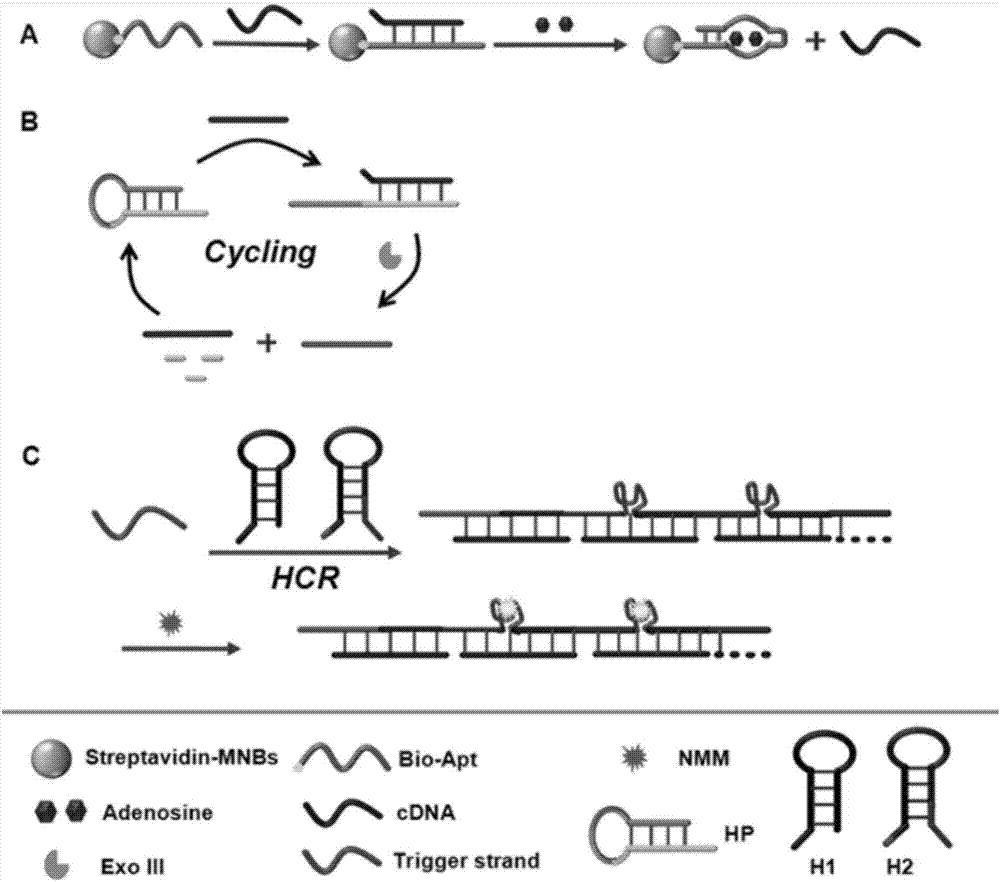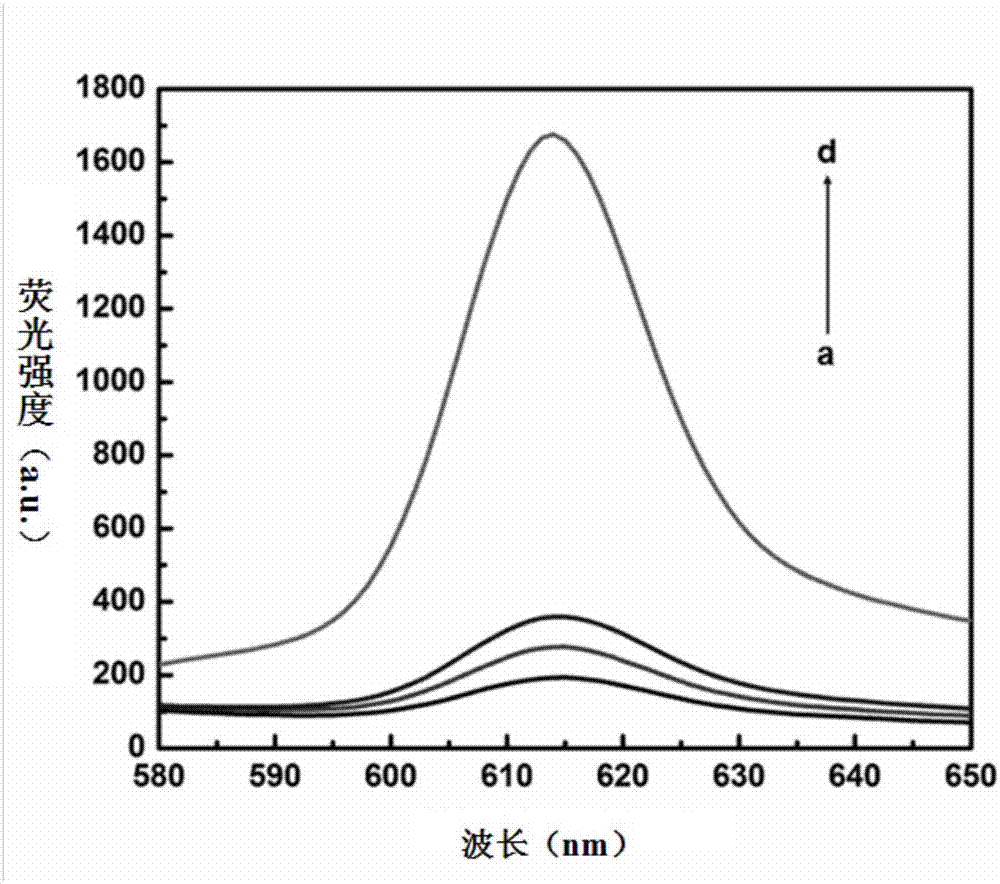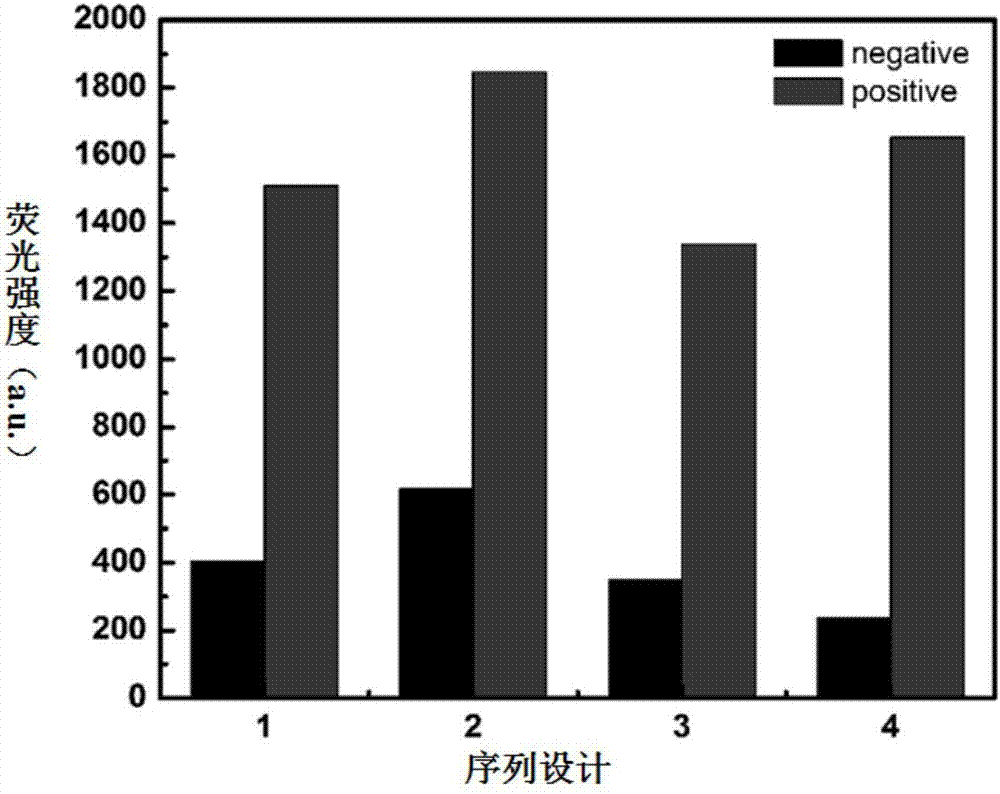Detection of Adenosine by Label-free Fluorescent Aptamer Sensor Based on Dual Amplification Strategy
An aptamer sensor and label-free technology, which is applied in the determination/testing of microorganisms, biochemical equipment and methods, etc., can solve the problems of reducing the binding constant of the aptamer itself, affecting the binding of the aptamer to the target, etc.
- Summary
- Abstract
- Description
- Claims
- Application Information
AI Technical Summary
Problems solved by technology
Method used
Image
Examples
Embodiment 1
[0069] Example 1 A label-free fluorescent aptasensor constructed based on a dual amplification strategy was used to detect adenosine.
[0070] 1. Materials and Reagents
[0071] All nucleic acid probes used in this example were synthesized and purified by Sangon Bioengineering (Shanghai) Co., Ltd., and the base sequences are shown in Table 1. The DNA stock solution was TE Buffer (10 mM Tris-HCl, pH 8.0, 1 mM EDTA-2Na), and it was stored at -20°C. Adenosine was purchased from Sigma-Aldrich (Shanghai, China). Cytidine, uridine, guanosine, Exo III and DMSO were all purchased from Shanghai Sangong. Streptavidinized magnetic spheres (350 nm in diameter, 0.05% Tween-20, and 10 μM EDTA at a concentration of 3.324×10 11 beads mL -1 ,1.343g mL -1), Tris (>99.8%) was purchased from Amresco Inc. NMM (N-methylmesoporphyrinIX) was purchased from J&K Scientific Ltd. (Beijing, China). The NMM stock solution was dissolved in DMSO and stored at -20°C in the dark. All reagents (analytic...
PUM
| Property | Measurement | Unit |
|---|---|---|
| diameter | aaaaa | aaaaa |
Abstract
Description
Claims
Application Information
 Login to View More
Login to View More - R&D
- Intellectual Property
- Life Sciences
- Materials
- Tech Scout
- Unparalleled Data Quality
- Higher Quality Content
- 60% Fewer Hallucinations
Browse by: Latest US Patents, China's latest patents, Technical Efficacy Thesaurus, Application Domain, Technology Topic, Popular Technical Reports.
© 2025 PatSnap. All rights reserved.Legal|Privacy policy|Modern Slavery Act Transparency Statement|Sitemap|About US| Contact US: help@patsnap.com



